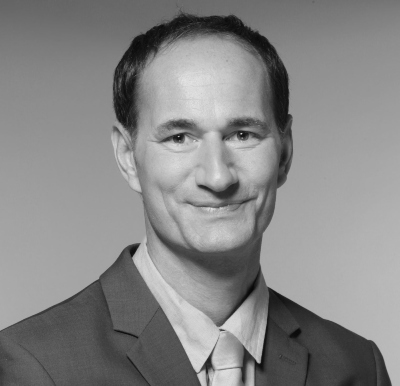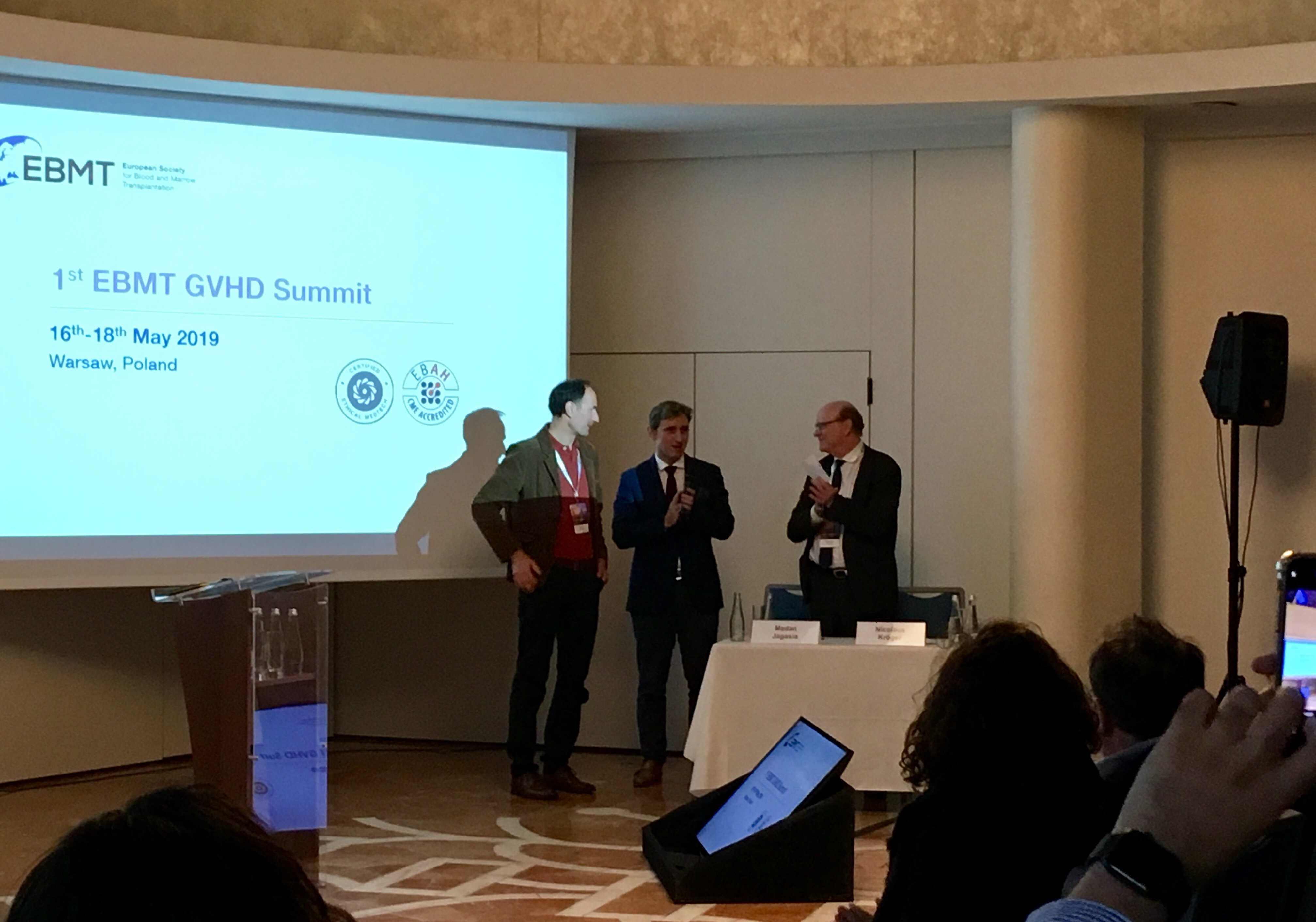
16-18 May in Warsaw, Poland
Report written by Olaf Penack, Chair GVHD Subcommittee, Transplant Complications Working Party (TCWP)

EBMT president Nicolaus Kröger and the local organizer Grzegorz Basak (TCWP chair) opened the first EBMT GVHD Summit together. They welcomed 252 participants and 41 speakers from 32 countries. In the keynote lecture, Bruce Blazar comprehensively summarized the contribution of work done in murine alloSCT models to current treatments and emerging new therapies. His presentation clarified very impressively that large parts of our knowledge in the field of GVHD is based on preclinical research in experimental models.
In a special lecture, Olaf Penack presented the new EBMT recommendations on prophylaxis and treatment of GVHD. Using a Delphi like approach, an EBMT task force and 20 GVHD experts reached a high level of consensus. The EBMT proposes to use these recommendations as basis for routine management during alloSCT.
In an educational session, Nicolaus Kröger showed recent data on the epidemiology of GVHD. Pavan Reddy and Francis Ayuk explained the current state of the art in acute GVHD diagnosis and severity grading. In accordance, Daniel Wolf and Steven Pavletic discussed diagnosis and grading of chronic GVHD. Finally, Helene Schoemans demonstrated how the EBMT GVHD App used to improve diagnosis and grading of GVHD.
The EBMT nurses group lead by John Murray organized a parallel nurse sessions with 37 registered participants. Psychological aspects and coping of negative impact of GVHD burden on daily life were central aspects. In addition, the nurses discussed practical aspects on eye, oral, GI, cutaneous and genital GVHD.
Leading GVHD experts discussed up to date knowledge during scientific sessions:
- Biomarkers and pathophysiology of GVHD. John Levine summarized the newest biomarker studies on acute GVHD from the MAGIC consortium whereas Kirk Schultz highlighted current developments in biomarker-based prediction of chronic GVHD-related outcome. Thomas Luft demonstrated how endothelium-related biomarkers are used to predict alloSCT outcome and Olaf Penack provided current knowledge on endothelial biology during GVHD. Christian Könecke terminated the session by his talk on T cell receptor repertoire during GVHD.
- Supportive care and specific issues. Rafael Duarte gave an overview on current developments of anti-infectious management during GVHD. Zinaida Peric depicted that a multidisciplinary approach is needed for GVHD management, giving examples from her center in Zagreb. Anita Lawitschka explained specific considerations applying to pediatric patients with GVHD. Finally, Shahrukh Hashimi gave a lecture on the current status and future perspectives of artificial intelligence in the GVHD field.
- Microbiome and antibiotics. Marcel van den Brink summarized recent studies on the association of microbiome changes with GVHD and alloSCT outcome. Ernst Holler discussed the role of antibiotic use in this setting. Subsequently, Takanori Teshima and Grzegorz Basak presented current data on how the disturbed microbiome may be restored either by pharmacological intervention or by fecal microbiota transplantation. The session was rounded up by a talk of Jérôme Legoff on the significance of the virome for GVHD development.
- Cellular therapy for GVHD. Halvard Böning showed data on feasibility and efficacy of mesenchymal stem cells for treatment of steroid-refractory GVHD. Hildegard Greinix explained mechanistic aspects as well as recent study results using extracorporal photophoresis. John gave an overview on the current concept to use interleukin-2 to boost regulatory T-cells for better control of GVHD. Jürgen Kuball completed this session with his talk on the role of gamma/delta T-cells for GVHD pathophysiology.
- Therapeutic options beyond steroids and calcineurin inhibitors. Madan Jagasia commenced by presenting recent clinical study data on the use of the Jak2 inhibitor Ruxolitinib for GVHD treatment. Francesca Bonifazi succeeded with her presentation on effects and mechanisms of ATG in the prevention of GVHD. David Miklos gave a lecture on the importance of B-cells for GVHD pathophysiology, including the use of ibrutinib as a novel agent in this indication. Leo Luznik summarized basic data and provided current results on his experience with post transplantation cyclophosphamide. Finally, Ran Reshef explained the most promising approaches on how to therapeutically interfere with T-cell trafficking during GVHD.
In conclusion, the first EBMT GVHD summit was an exciting meeting with very relevant topics for a broad audience of GVHD experts, nurses as well as junior physicians. We had fruitful discussions at the meeting, but also during lunch and dinner times. Such meetings are extremely helpful and motivating for daily practice, networking and research opportunities.
I am grateful that I had the opportunity to help organizing the first EBMT Summit. I would like to thank the EBMT staff, the local organizers, the speakers and the participants for their valuable contributions. I am looking forward to meeting you again soon.
